David's Diary: Thursday, February 27, 2003
Kairouan, Tunisia
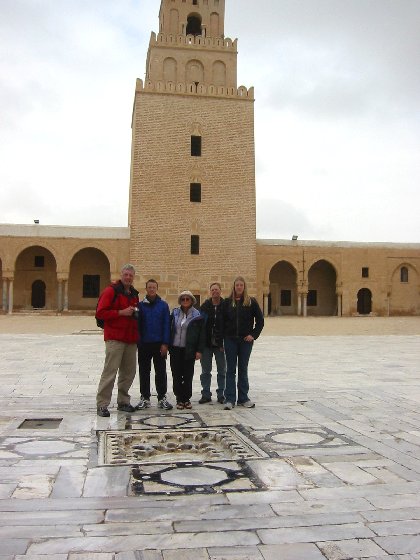
Great Mosque with Minaret (photo Allen Greer)
Our friend Bobbie is going back to Canada next week, so we decided to take a break from formal school and visit the town of Kairouan located to the west of Monastir in Tunisia. We were off the boat by 9:00 AM and walked to the Monastir Louage station. A Louage is a kind of shared taxi with a fixed destination. It usually holds seven or eight people and doesn't leave until it is full. With six of us we only have to wait a minute or two before one more passenger arrived and the Louage is ready to head for the highway.
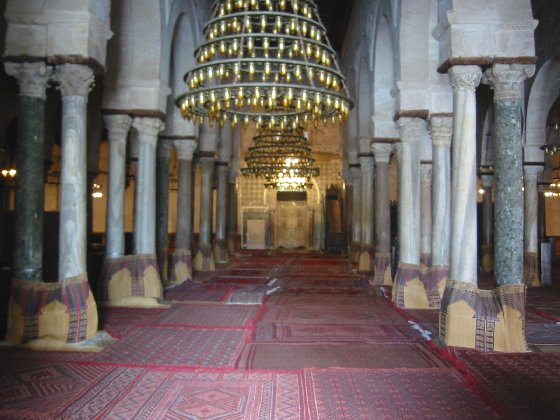
Prayer Hall
The Great Mosque at Kairouan is considered to be the fourth most holy site of Islam (after Mecca, Medina, and Jerusalem). We enter the Great Mosque and admire the huge square laid with tile. The first mosque on this site was built in 670AD, but most of what stands today was built in the 9C. We can approach the prayer hall, but as non-Muslims we are not allowed to go inside. We peer at the rich carpets that line the floor, the tall marble columns, and the decorative tiles.
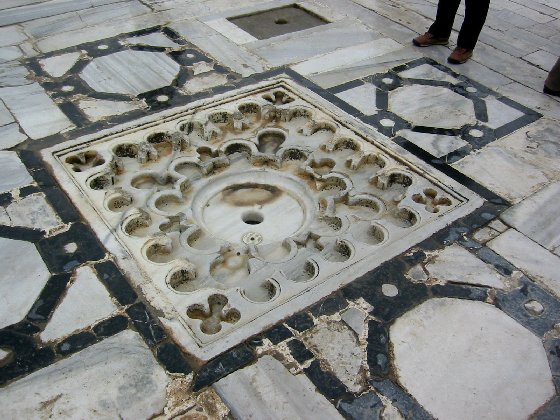
Water Catchments and Filters
Underneath the courtyard are huge water cisterns. The entire courtyard is designed for water catchment. The tiles are all sloped slightly to cause the water to run into a central water filter. The filter is made of marble and has semicircles on three different levels. These were designed to filter out dust and sand from the rainwater. In Tunisia, we are still surprised that when it rains our boat gets covered in sand. Storms pick up the sand in the desert and water drops form around the sand particles. We marvel that the small central filter is capable of filtering out so much sand and dirt.

Inside Zaouia of Sidi Sahab
We explore the Medina, have lunch, walk through the market, and wander around getting a little bit lost until we come to the Zaouia of Sidi Sahab. In Islamic architecture, a Marabout is a tomb, usually with white-washed domes, of a Muslim holy man. A Zaouia is an expanded Marabout. A Zaouia is created when the following of one holy man has grown to the point where facilities are needed for visiting pilgrims.
The Zaouia of Sidi Sahab contains the tomb of Abu Zama el-Belaoui, a companion of the Prophet Mohammed (the founder of Islam). The mausoleum was started in the 7C, but what you see in the pictures as added in the 17C. The tiles in the hallways leading to the mausoleum are beautiful and we stop to admire them as we wander along.
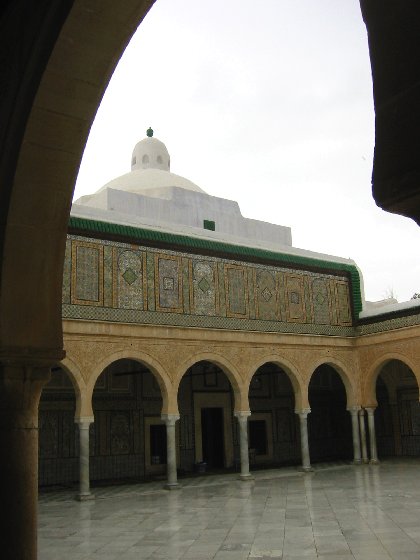
Sidi Sahab Mausoleum
There is an internal courtyard and off this is the mausoleum itself. Once again, we can only look in from the outside as non-Muslims are not allowed to enter. Through the doorway we can see the tomb of Abu Zama el-Belaoui. The guard at the door sprinkles us with holy water which is supposed to bring us good luck.
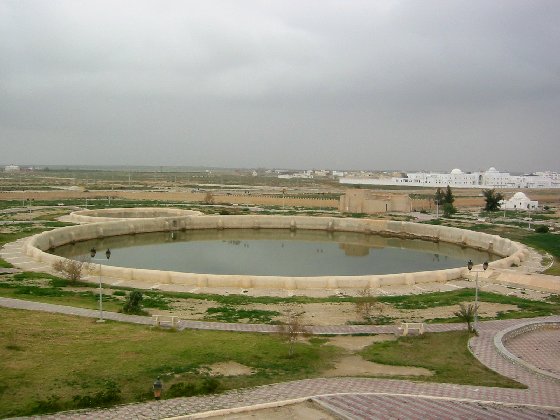
Aghlabid Basins
We leave the Zaouia and walk along one of Kairouan's major roads. We stop where we arrived in Kairouan at the Aghlabid Basins. We go upstairs to get a better view of the largest basin which is 128m in diameter. The basins were built in the 9C to hold the city's water supply. The water came to the city via a 36km aqueduct which started in the hills to the west of the city. Having enjoyed our day in Kairouan we found another Louage and headed back to Monastir.
We have many pictures of Kairouan which you can see by selecting the link below. Use your back button to return here when you are finished looking at our Kairouan pictures.
